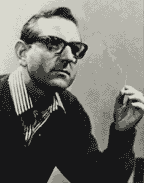© 2002-2017 Italian-mysteries.com

|
|||||||||||||||||||||||||||||
|
|||||||||||||||||||||||||||||
Timothy HolmeVile FlorentinesJACKET NOTES: No city state in history has been the setting for such fierce brutality and sheer driving creativity as was Florence from the mid-thirteenth to the mid-fourteenth centuries. It was a city every bit as vicious as ancient Rome, as lofty as Athens, as uninhibited as Sodom and Gomorrah. Poets, soldiers, artists, popes, courtesans--all played their part in Florence's towering tragi-comedy. Home Page | Email | Site Search Contemporary Mysteries | Series | Non-Series Historical Mysteries | Ancient Rome | Middle Ages | Renaissance | 1800s Suspense/Thrillers | Action/Adventure | Literary Fiction | Non-Fiction Crime Series on DVD | Non-Italian Settings | Theme Views | Location Views | Author Index | Site Map | What's New Mystery Links | Waiting List © 2002-2017 italian-mysteries.com (The Mysteries Set in Italy Website) |
|||||||||||||||||||||||||||||

